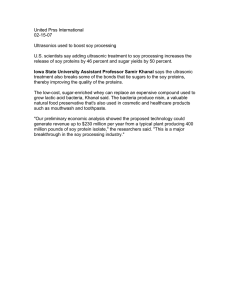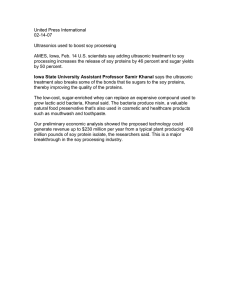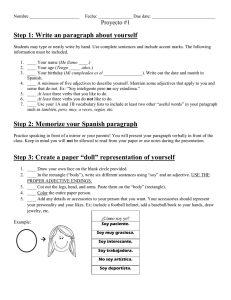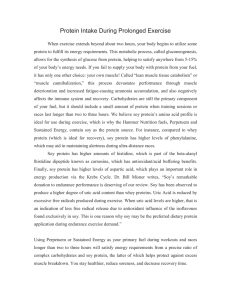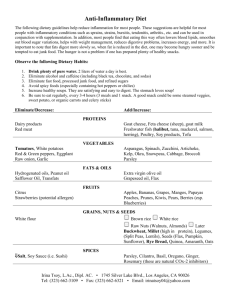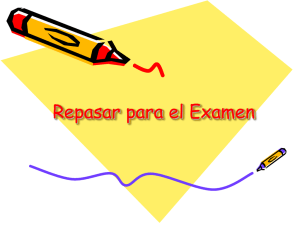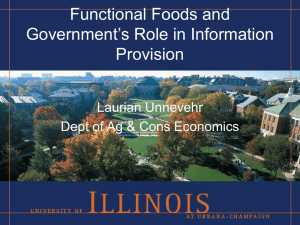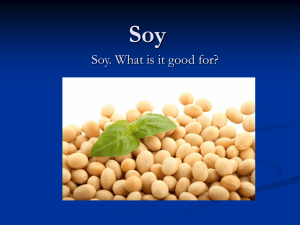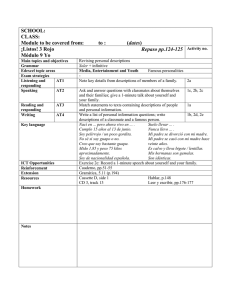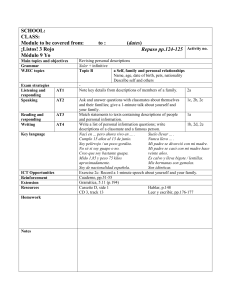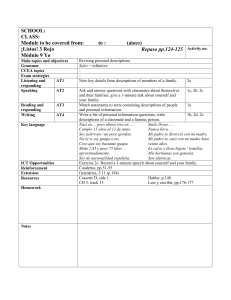Market Transformation and Reducing the Ecological Footprint Making More From Less Jason Clay
advertisement
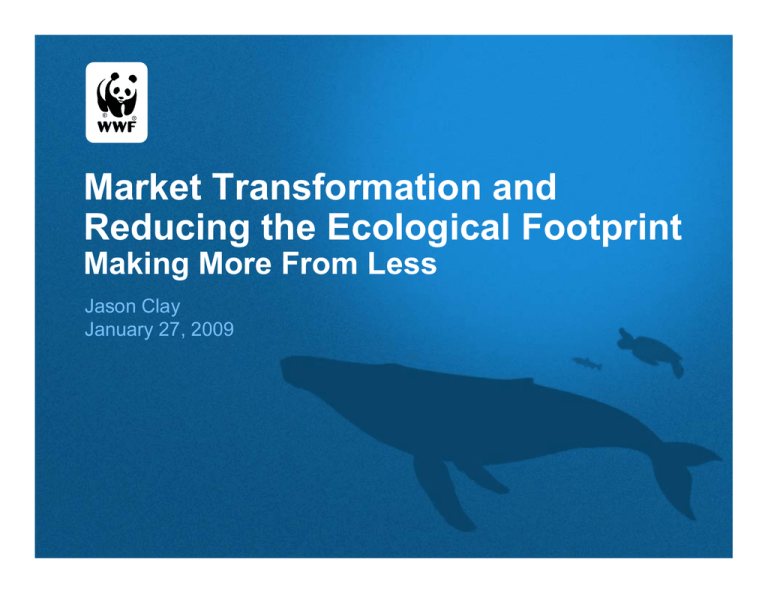
Market Transformation and Reducing the Ecological Footprint Making More From Less Jason Clay January 27 27, 2009 Global Trends by y 2050 3 billion more people Consumption will double Longer supply chains, fewer players, more direct contact South/South trade will dominate Bundled values for commodities will include carbon, water and poverty alleviation “ “Voluntary” ” standards will lead the way Why y Market Transformation? Amazon – soy, cotton, livestock, timber Coral Triangle – tuna, live reef fish, aquaculture Indus Delta – rice, cotton, sugarcane Borneo – palm oil, timber East/Southern Africa – biofuels, tuna Arctic – cod and pollack, carbon Agriculture’s Global Footprint 33% of Earth’s surface in crops or grazing but 55% of habitable area 4 Follow the Money y Average Annual Global Investments in LDCs WWF’s Market Transformation Focus Consumers About 300-500 companies control ~ 70% of choice Persuade >6B shoppers? Greatest Point of Leverage Brands Manufacturers Traders Su upply Cha ain Retailers / Buyers Investors Processors Primary producers/extractors Need to reduce the threat! WWF Global Priorities Engage with >1B producers 10 Water Coffee Sugar Milk Paper Plastic 1 latte > 200 liters of water <0.1 Water Lid 2.5 5.5 Cup Sleeve 7.5 Sugar 49.5 Milk 142.8 Coffee = 1 liter Aluminum Water Energy Energy 1 recycled laptop 1 laptop = 3laptop sq.=Water ft. 50,000 =of0 rainforest liters lost Brazilian Soy & Pigs in China 90 80 Million n Metric Tons 70 Brazil Soy Production 60 China Soy Production China Pig Production 50 40 30 20 10 0 1961 1966 1971 1976 1981 1986 1991 1996 2001 China Imports Soy, Sugar and Cotton from Brazil, but… …is buying water, soil, and reduced pollution “The Problem of What to Eat” Conservation. Natasha Loder, Elizabeth Finkel, Craig Meisner, and Pamela Ronald. July-September 2008 9(3):31 population x consumption ≠ planet era of resource scarcity risk and opportunity supply chain security license to operate reputational risk changing regulations more with less genetics and productivity more with less efficiency choices—better choices better or worse Bycatch y and Wild-Caught g Shrimp p Worse • 13 kg of bycatch is worst • > 5.6 kg is global average Better • 3 kg bycatch is average in Gulf of Mexico • 0.4 kg is average of company in Madagascar more with less efficiency gains—doubling gains doubling up Poultry—Efficiency y y Means Survival & Market Share more with less BMPs Producing Cattle in the US—Better and Worse Same rainfall, soils and species Same place (1 mile apart) Pictures taken the same day 4 times more cattle and more wildlife The only difference is management more with less new businesses, new products New Services,, New Businesses DuPont Sulfuric acid—Waste to product GHG service Take it global Yara Nitrogen—Waste to product GHG service Poultry physical values iintangible/certified t ibl / tifi d values weights and measures organic quality non-GMO color l carbon foreign matter water health and safety poverty alleviation protected riparian areas biodiversity no child labor embedded impact >85% direct control <15% 2050 Vision—More with Less Zero loss of natural habitat 50% reduction in water use Zero loss of soil carbon Eli i ti off waste/pollution Elimination t / ll ti Reduce and reuse—only then recycle change Change the way we think about risk Change the way we think about opportunity Change the way we think about investing Change the way we think about buying Change the way we think about everything
